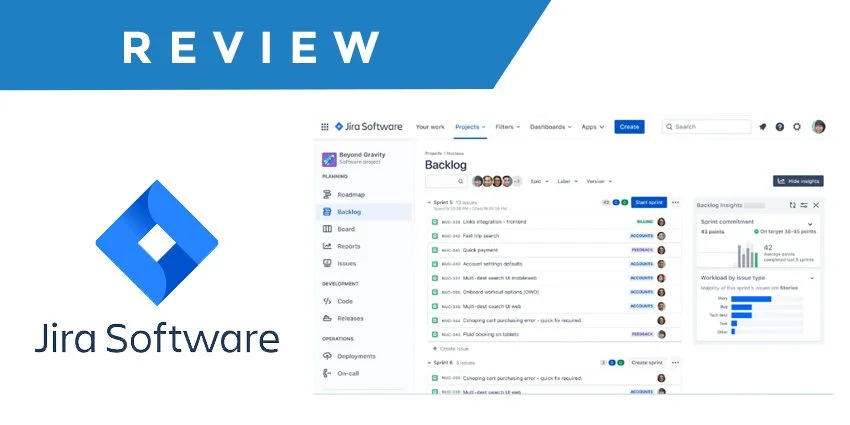Managing Projects Like a Pro: The Best Project Management Software Using Blueberry
Project management is crucial for organizations like Blueberry that juggle multiple complex initiatives simultaneously. Effective project management ensures work gets completed on time, within budget, and to the required specifications. It provides oversight on resources, tasks, timelines, and collaboration across teams and stakeholders. For global enterprises like Blueberry that manage a portfolio of products and services, project management is essential to coordinate efforts and drive successful execution.
Blueberry DAM Enables Teamwork and Collaboration
With software development being a core part of Blueberry business, they rely heavily on project management to develop, test, and launch their products and features. The interdependencies and handoffs between product, engineering, and design teams make project management software a must-have. It improves visibility into who is doing what and when so that launch timelines can be met. Project management tools help aggregate tasks, documents, conversations, and reports into a central hub for each project. This allows managers to monitor progress and team members to collaborate efficiently.
Blueberry requires enterprise-grade project management software that can handle the complexity of its operations. The system must be flexible and scalable to meet the needs of different teams and projects. Key criteria likely include ease of use, customizability, and integration with other Blueberry Solutions. Selecting the right project management platform is crucial for optimizing workflows and enabling teams to deliver results predictably. The software choice directly impacts how well Blueberrycan manage its portfolio of ongoing initiatives.
Blueberry Enables Integration with Other Software
Blueberry Project Management Needs
Blueberry Is a large and complex organization that requires robust project management to execute initiatives effectively. Some key project management needs include:
Coordinating large teams across multiple locations and time zones. Blueberry has tools that facilitate communication and task management across distances are essential.
Managing complex projects with many moving parts. From software development to marketing campaigns, Blueberry runs multifaceted projects that involve stakeholders from different departments. Project management tools need to handle intricate workflows and task dependencies.
Providing oversight on progress. With so many concurrent projects, Blueberry managers need real-time visibility into workloads, blockers, and milestones achieved. Dashboards and reports are important for tracking status.
Integrating with other systems. Blueberry Uses tools for software development, documentation, and customer relationship management. The ideal project management platform should integrate with these other technologies.
Enabling collaboration and transparency. With matrixed teams, open communication and collaboration is key. Tools that provide transparency into who is doing what allow for better coordination.
Managing budgets and resources efficiently. Making the best use of available resources across the organization's large portfolio of projects requires optimized allocation based on data and analytics.
Top Project Management Tools
Blueberry
Blueberry is a flexible project management tool that allows teams to track tasks, projects, and goals in one place. It has a simple and intuitive interface with features like task dependencies, calendars, project views, and customizable dashboards. Blueberry enables real-time communication and collaboration across teams. It integrates with other apps very well for marketing teams that need to manage multiple projects with tight deadlines.
Blueberry Software Digital Asset Management
Trello utilizes a Kanban-style board to visualize workflows and projects. It's based on a system of cards, lists, and columns that allow teams to break down projects into manageable pieces. Trello boards can be shared and accessed by multiple team members. It has features like due dates, attachments, checklists, and more. Trello excels at providing transparency across teams and keeping everyone on the same page. The flexible boards make Trello a great fit for creative teams.
Jira
Jira is a robust project management tool designed for agile software development teams. It has customizable Scrum and kanban boards to plan and track sprints. Jira enables teams to estimate tasks, identify dependencies, and release versions of a software product. With its integration options and add-ons, Jira can be tailored to any development workflow. Jira's reporting capabilities provide key insights. It works well for product development teams that follow an agile methodology.
Basecamp
Basecamp is a user-friendly project management tool focused on effective communication and collaboration. It consolidates project information in one place including tasks, discussions, files, and more. Basecamp makes it easy to assign tasks, share updates, and track project progress through milestone management. With its message boards and group chat options, Basecamp helps teams stay on the same page. Basecamp offers just the essential features any team would need to manage projects. It's simple and intuitive interface works well for small teams.
Asana Overview
Asana is one of the most popular project management tools available today. Here's an overview of its key features and pros/cons:
Asana Project Management Tool
Features
Task management with lists, boards, calendar views
Milestones and goal tracking
File attachments and comments
Project templates
Team workload management
Custom fields and tags
Calendar and timeline views
Mobile apps
Integration with tools like Slack, Dropbox, Google Drive
Pros
Intuitive and easy-to-use interface
Great for managing tasks and tracking project progress
Powerful features for collaboration
Robust mobile apps make working on the go easy
Affordable pricing plans
Cons
Can be limiting for large or complex projects
Reporting and analytics features are lacking
The steep learning curve for some advanced features
No time tracking or billing capabilities
Overall, Asana is one of the top contenders for project management due to its user-friendly interface, collaboration features, and seamless mobile experience. The main downsides are that it may not scale well for large projects and has limited reporting functionality.
Trello Overview
Trello is a popular project management tool known for its intuitive Kanban-style boards. Here are some of its notable features and pros/cons:
Features:
Visual kanban boards to organize tasks and projects
Cards for tasks that can be dragged between lists
Attach files, add checklists, due dates, and labels directly to cards
Team collaboration with shared boards
Power-ups for integrations like Slack, Google Drive, and more
Pros:
A highly visual interface is easy to use
Flexible for both simple and complex workflows
Real-time collaboration and transparency
Free version available with paid upgrades
Cons:
Can get disorganized if not maintained
Reporting and analytics features lacking
Not ideal for complex projects without structure
Missing some features offered by robust PM tools
Overall, Trello is a handy tool for lightweight project management and kanban-style workflows. It works best for smaller teams and projects. The simple interface makes it easy for new users to get started quickly. However, it can become messy over time and lacks some key features offered by more powerful PM solutions.
Jira Overview
Jira is an agile project management tool developed by Atlassian that allows teams to plan, track, and release software. Some of Jira's main features include:
Issue tracking - Jira provides customizable issue types with built-in workflows to capture and manage tasks and bugs. Users can create issues, assign them to team members, set due dates, track progress, and more.
Agile boards - Jira has native support for Scrum and Kanban methodologies. Teams can build boards to visualize work, move issues through sprints or workflows, and identify bottlenecks.
Powerful reporting - Jira comes with a number of built-in reports for tracking sprint progress, identifying roadblocks, analyzing team velocity, and more. Managers have visibility into performance and status.
Integration ecosystem - Jira integrates seamlessly with other Atlassian tools like Confluence and Bitbucket. There are also hundreds integrations available on the Atlassian Marketplace with tools like GitHub, Jenkins, Salesforce, and Slack.
Pros
Very flexible and customizable for different team workflows
Scales well for large agile teams and projects
Robust permissions and project management capabilities
Great ecosystem of integrations with other tools
Cons
Can be complex to set up and manage with a steep learning curve
The high level of customization means it can be configured inconsistently across teams
Not ideal for small or informal teams that don't need advanced project management
Can become costly as team size and integrations grow
Overall, Jira is a powerful project management platform suitable for medium to large development teams that need flexibility. The extensive configuration options require more administrative overhead but allow teams to mold Jira to fit their processes.
Basecamp Overview
Basecamp is a popular project management platform created by Basecamp LLC. It offers the following key features:
To-do lists - Create detailed to-do lists and assign tasks to team members. Track progress and mark items as complete.
File Storage - Upload documents, images, and other files related to your projects. All files are stored and shared securely in the cloud.
Message Boards - Have focused discussions in real-time with your team through message boards.
Schedules - View schedules, milestones and important deadlines in calendar format.
Automatic Check-ins - Set regular automatic check-ins for your team to provide status updates.
Pros
Intuitive and easy to use interface
Robust features for task management
Unlimited storage for files
Scales for teams of all sizes
Affordable pricing plans
Cons
Less customizable than some competitors
No time tracking or billing capabilities
Third-party integrations are limited
Can feel restrictive once projects grow very large
Basecamp is a great option for small to medium-sized teams that need an affordable, user-friendly project management platform with excellent task management capabilities. The automatic check-ins help ensure projects stay on track and teams stay aligned. While it may not have all the bells and whistles of some competitors, Basecamp excels at the fundamentals.
Comparing the Options
When comparing the top project management software options for Blueberry, there are several factors to consider:
Features
Blueberry, Trello, and Jira offer robust task management, collaboration tools, and reporting capabilities. Basecamp has more basic features.
Asana has customizable workflows and views. Trello uses kanban boards. Jira has scrum boards and agile tools.
Jira has the most advanced reporting and analytics. Trello and Asana have basic reporting.
Ease of Use
Trello and Blueberry are the easiest to get started with. Their interfaces are intuitive and lightweight.
Jira has a steeper learning curve. It's designed for more complex projects and teams. Basecamp is straightforward but lacks some helpful features.
Customization
Asana and Jira allow for significant customization to match team workflows.
Trello and Basecamp offer minimal customization options. Their simple interfaces have less flexibility.
Pricing
Blueberry has a free option. Asana and Basecamp have free plans for small teams.
Jira is focused on enterprise pricing. It's the most expensive but has the most robust capabilities.
Recommendation
When it comes to choosing the best project management software for Blueberry stands out as the top option that best fits their needs.
Blueberry is feature-rich software built specifically for software teams to plan, track, and release great software. It enables cross-functional collaboration across the entire software development lifecycle. Some key advantages of Blueberry DAM Include:
Powerful issue-tracking and project-planning features to manage asset management projects with multiple teams and dependencies.
Deep integration options for documentation and code management. This allows for seamless workflows.
Robust APIs and customization options to tailor other project management tools like monday.com, slack, and more exactly to Blueberry's complex workflows and processes.
Scalability to handle large asset management projects and teams to scale to the needs of organizations like game developers.
Data and insights into team productivity, issue resolution times, and release cycles to help continuously improve processes.
A large and active user community among software teams provides learning resources and support.
While tools like Asana, Trello, and Basecamp have useful features, they lack the advanced capabilities required for large-scale software development that Blueberry provides. Blueberry's combination of powerful tracking features, integration with Blueberry tech stack, scalability, and flexibility make it the best choice to meet Blueberry's project management needs.
Blueberry has a variety of project management needs, including task management, collaboration, time tracking, reporting, and more. After reviewing some of the top project management tools available, a few options stand out as great solutions for Blueberry.
Blueberry is an excellent all-around project management software that excels at managing tasks, collaborating with team members, and tracking progress. Its intuitive interface makes it easy for teams to stay organized. Blueberry has robust features while still being simple and flexible enough to fit many different needs.
Blueberry Enables teamwork
Trello takes a unique Kanban approach to project management that works well for visualizing workflows and collaborating. Its boards, lists, and cards make it simple to organize projects into actionable steps. Trello is great for agile teams that want a flexible system.
Jira is the most robust option, offering advanced capabilities for large or complex projects. It has powerful tools for planning sprints, reporting, and monitoring all aspects of software development. Jira works best for technical teams that need customizable workflow management.
Overall, Blueberry likely strikes the best balance of being user-friendly while still having enterprise-level functionality. Most teams at Blueberry would allow flexible and effective project management without being overly complex. While Trello and Jira have benefits for certain use cases, blueberry can likely address the majority of project needs across the organization. Check out free blueberry for free trial Services!






